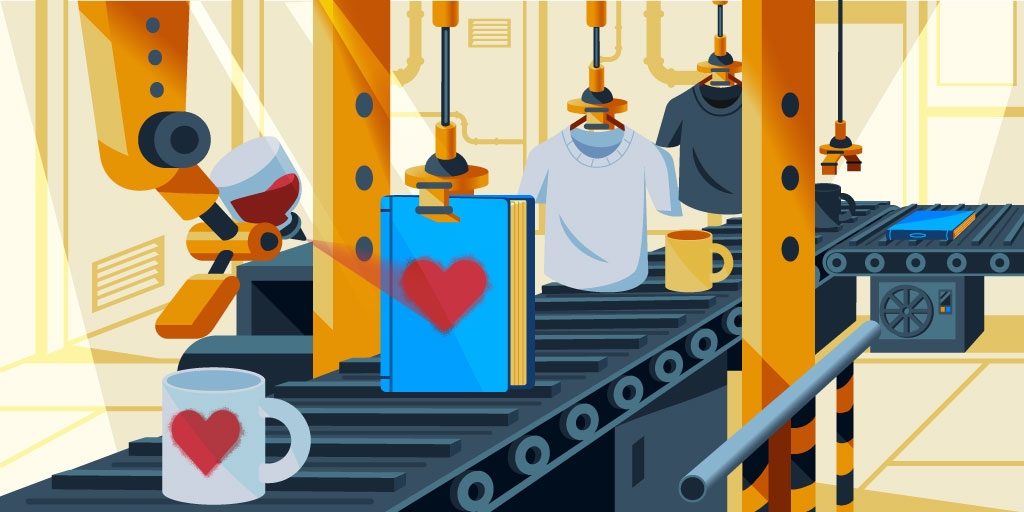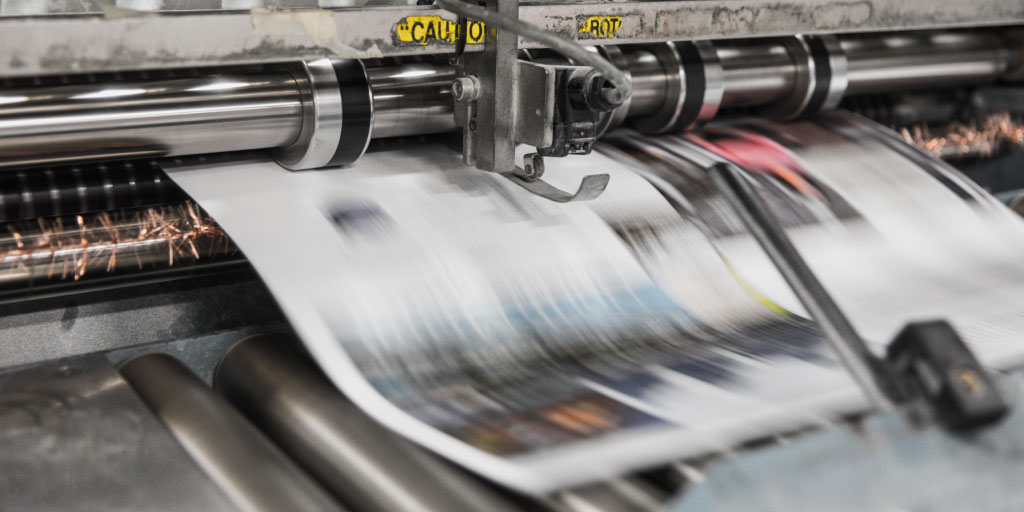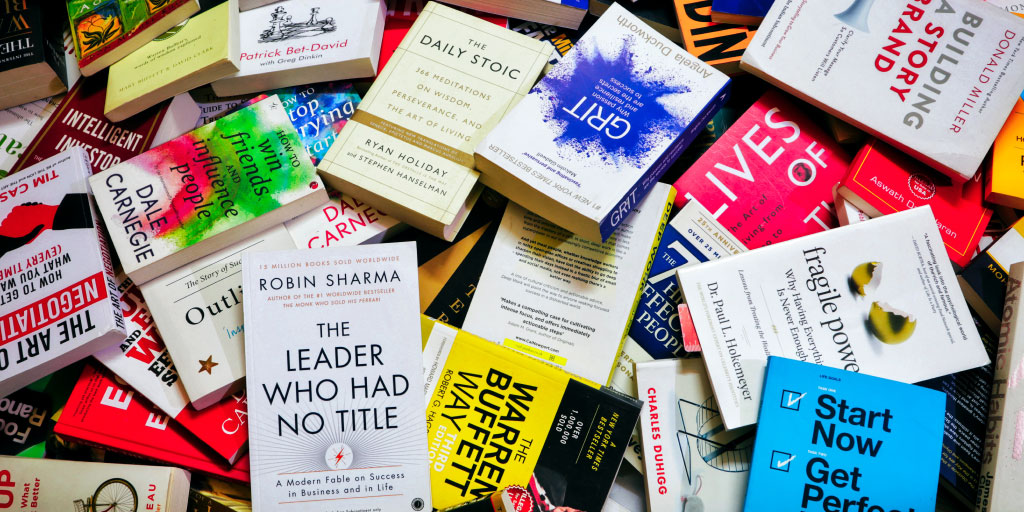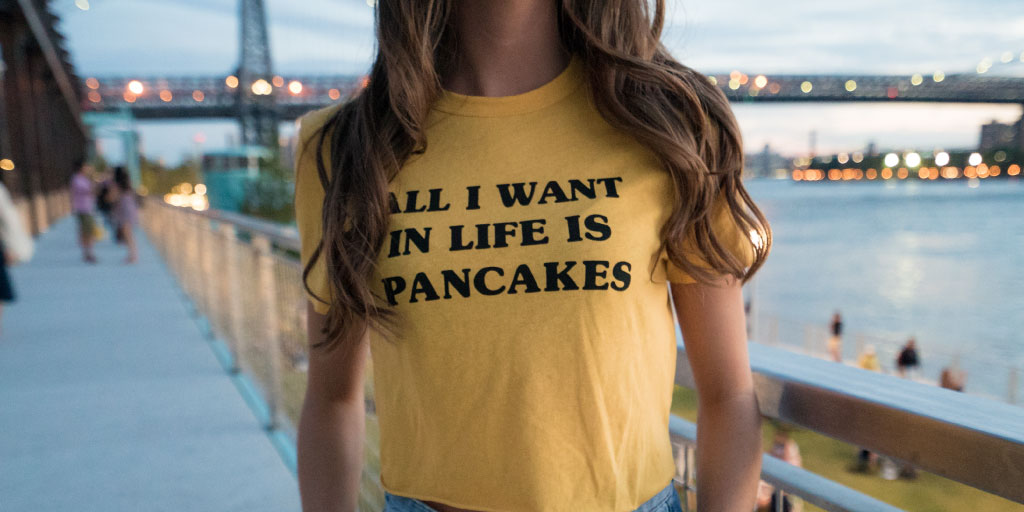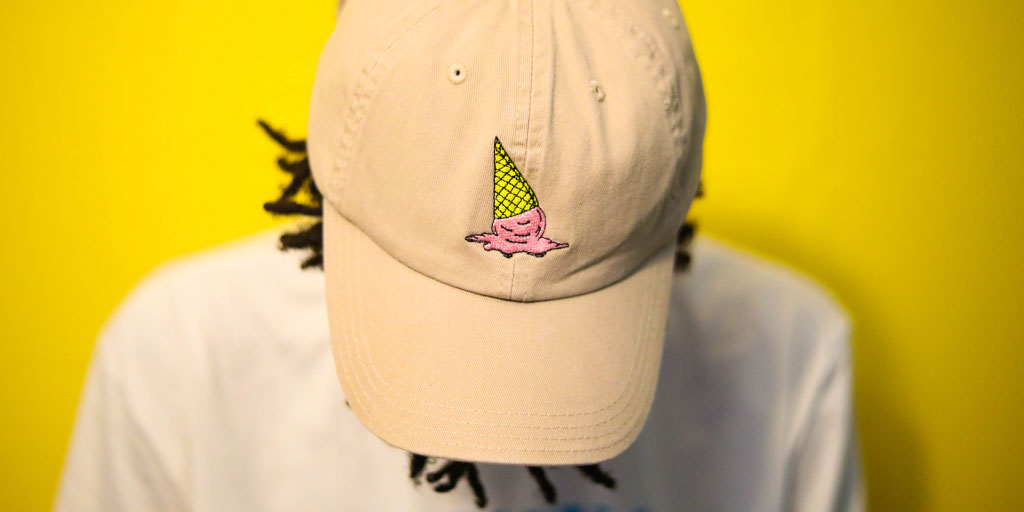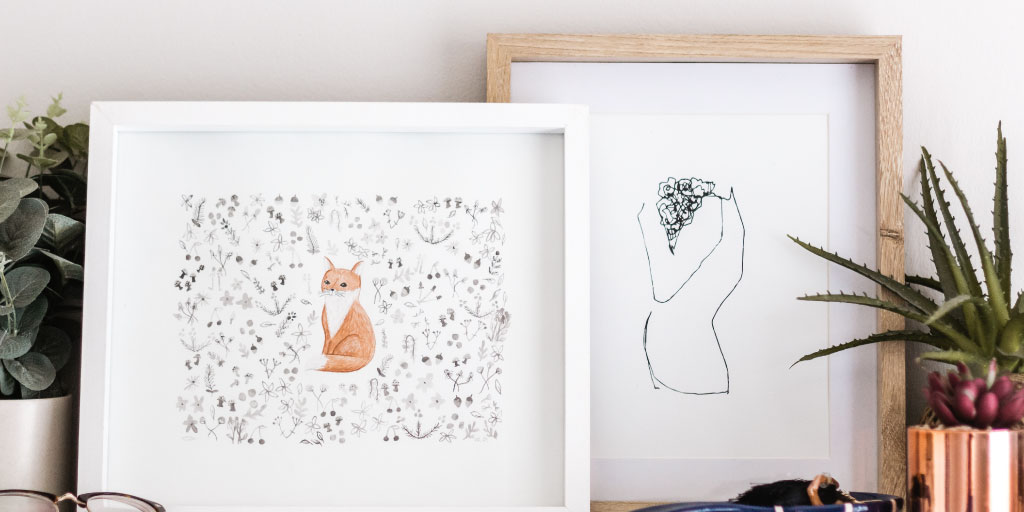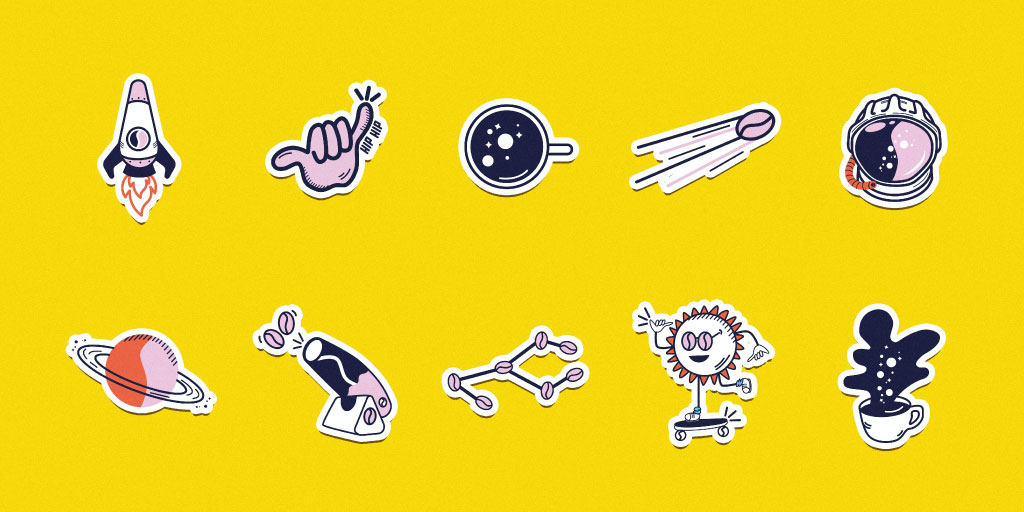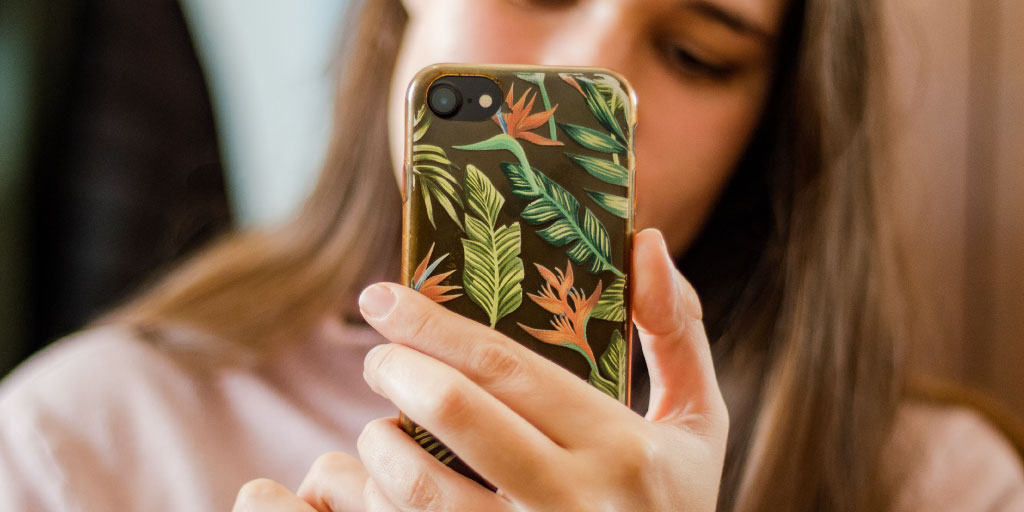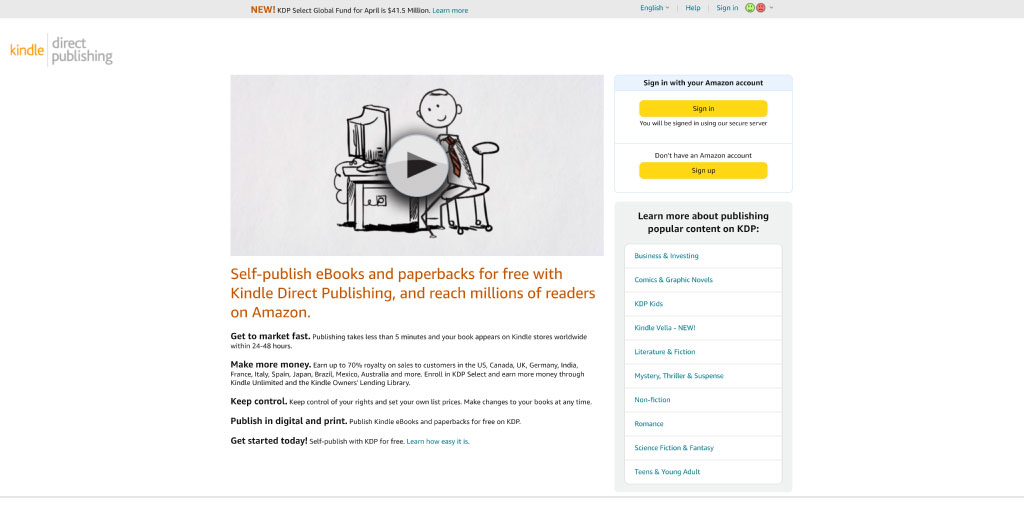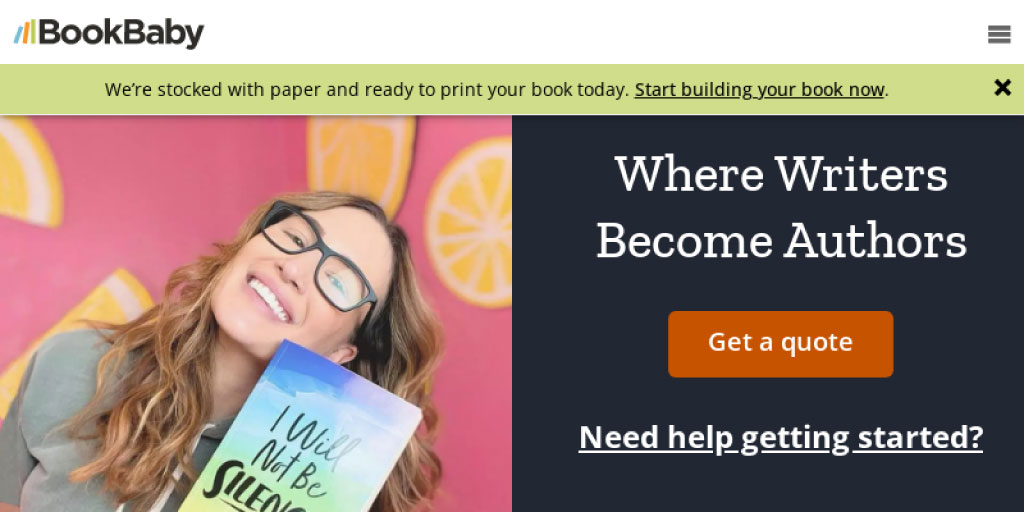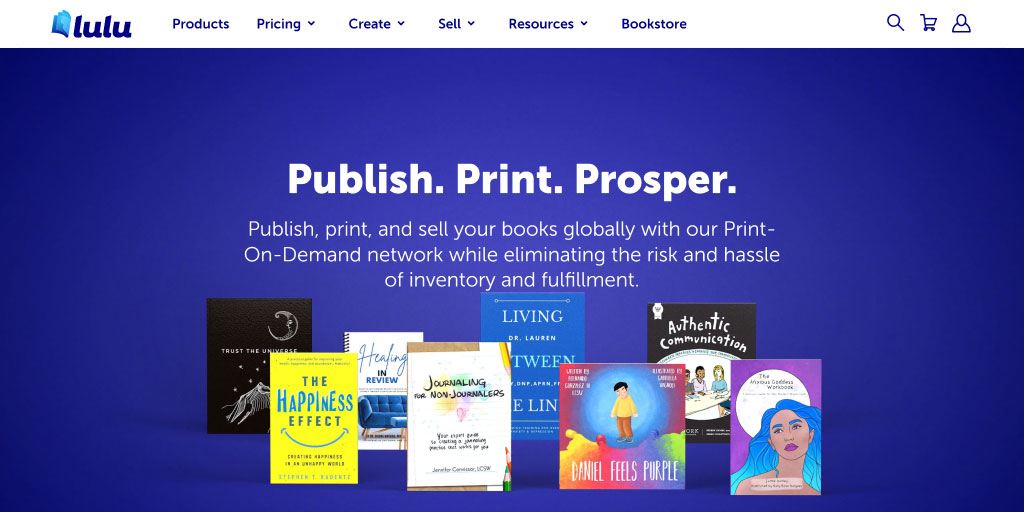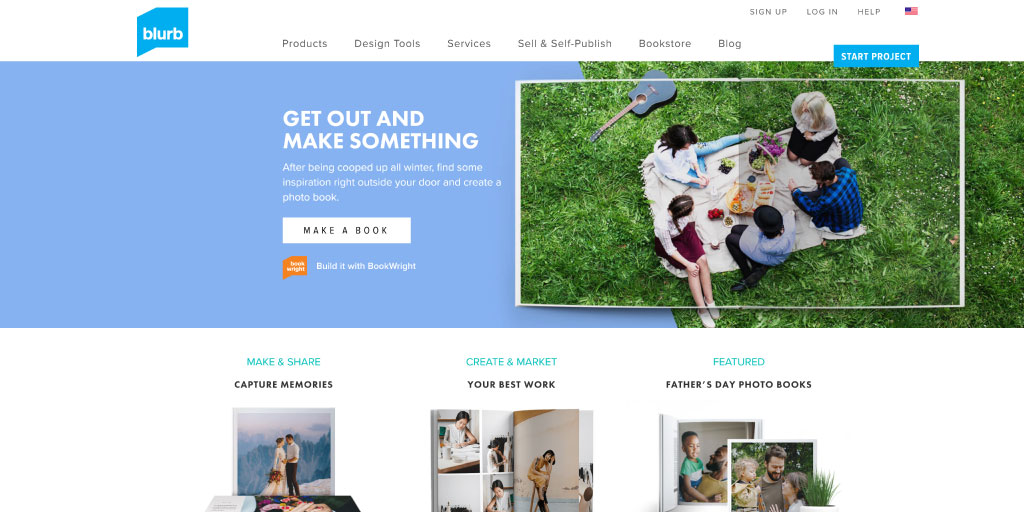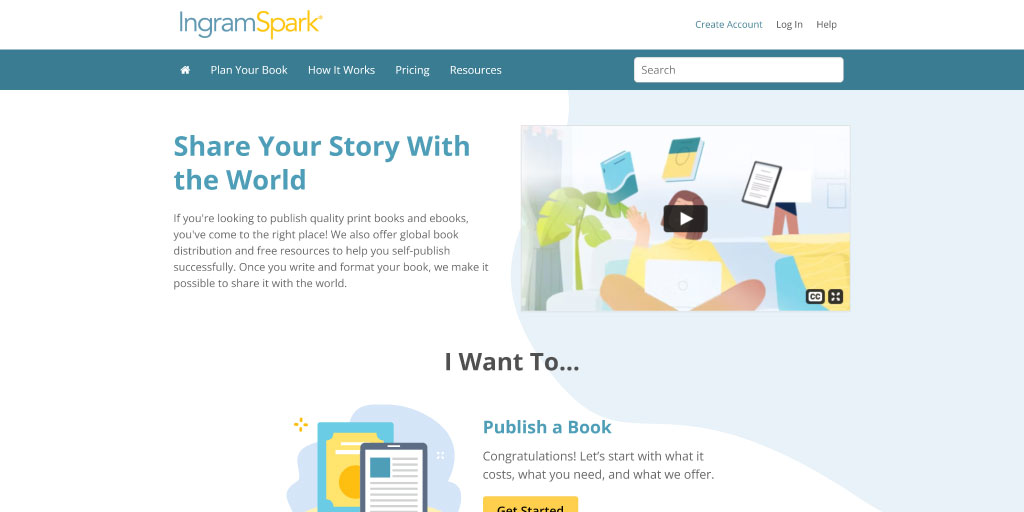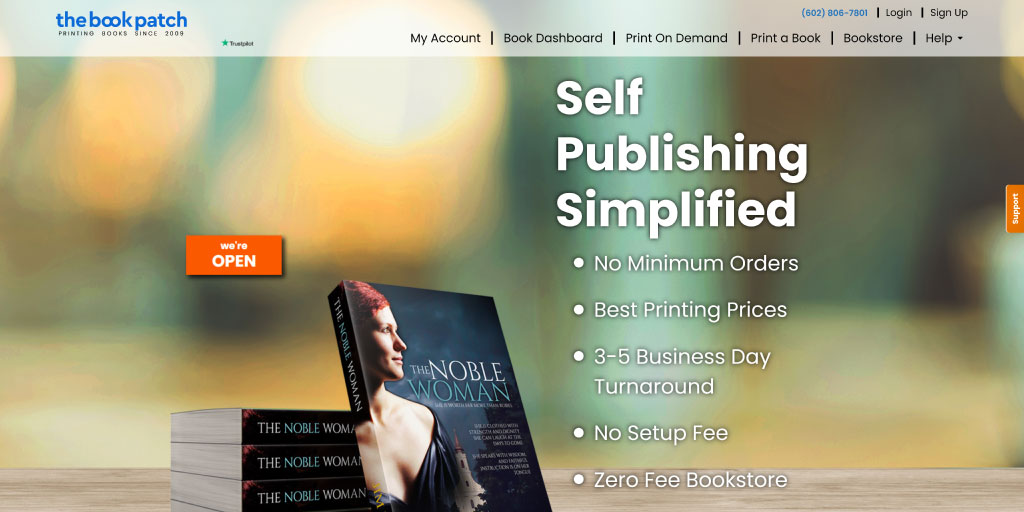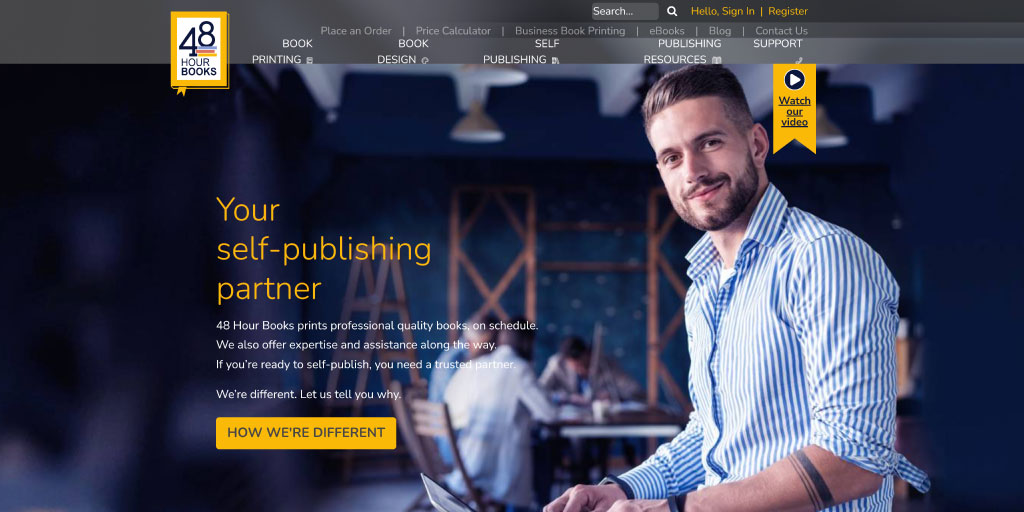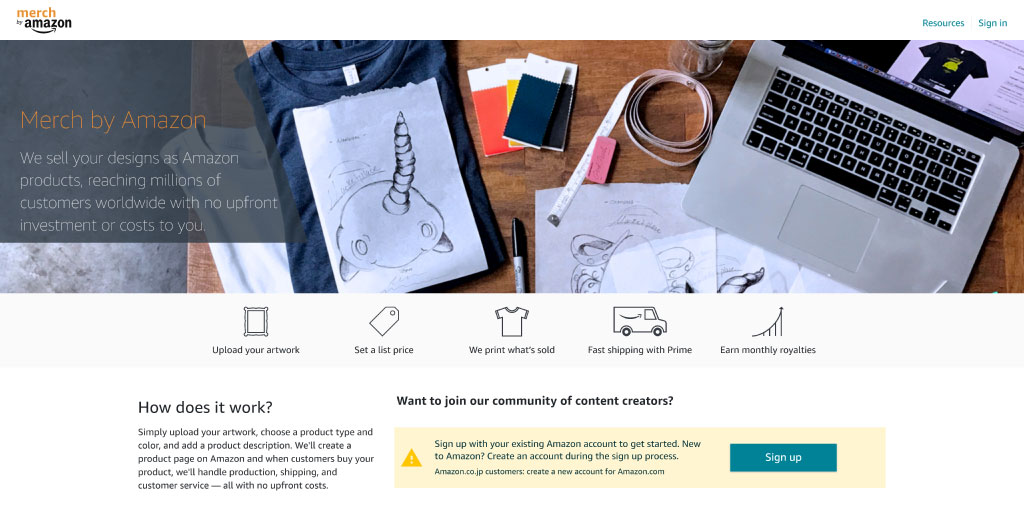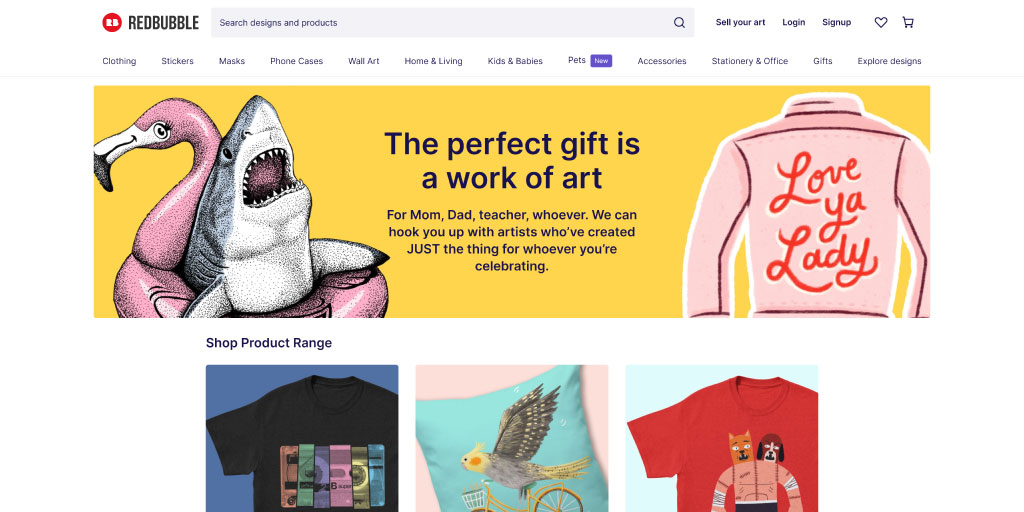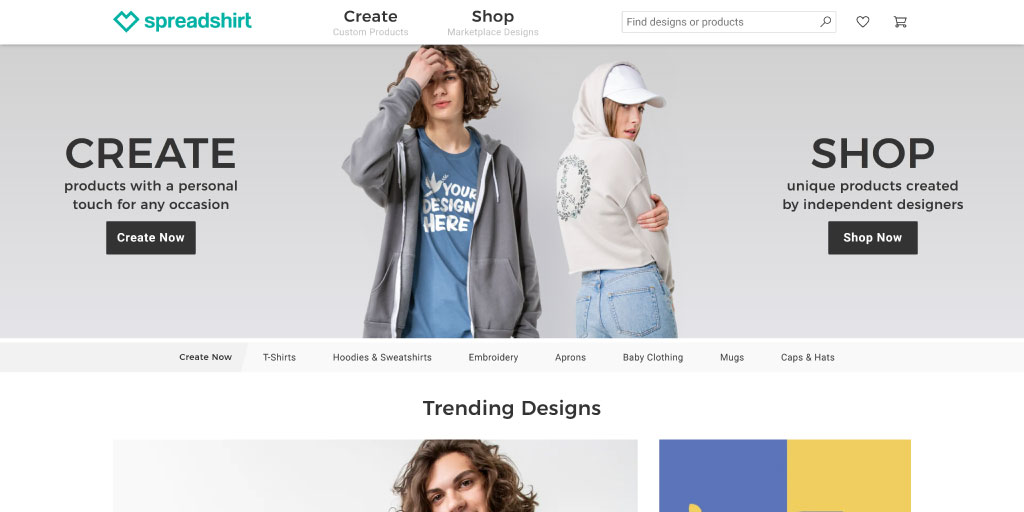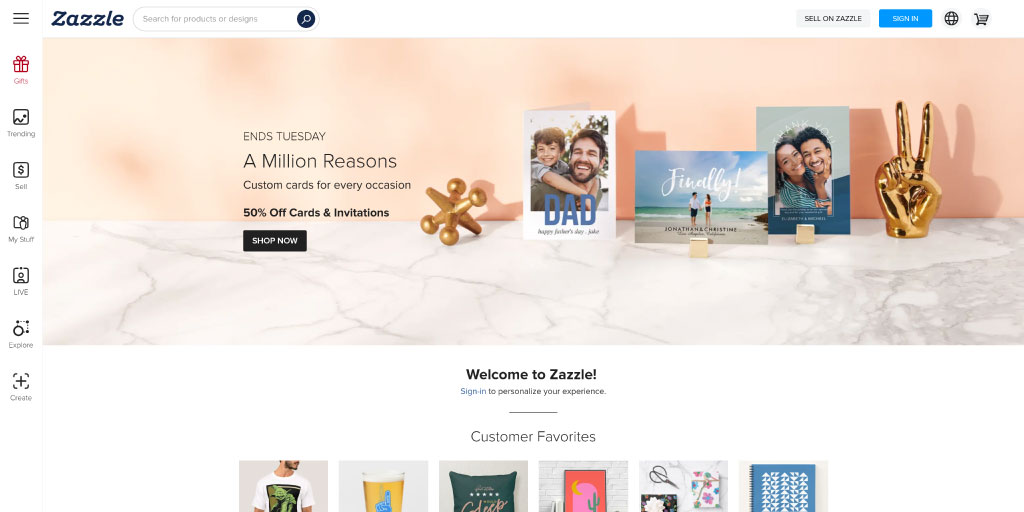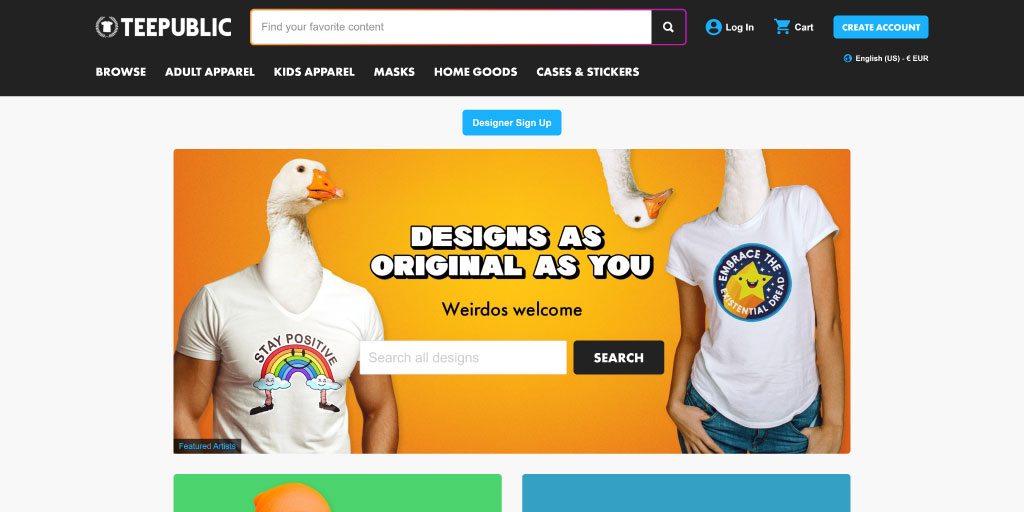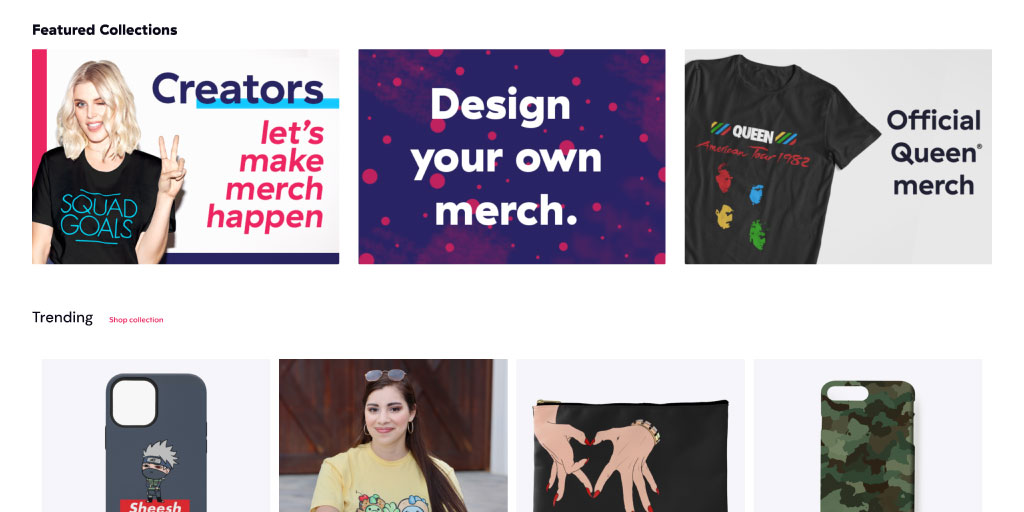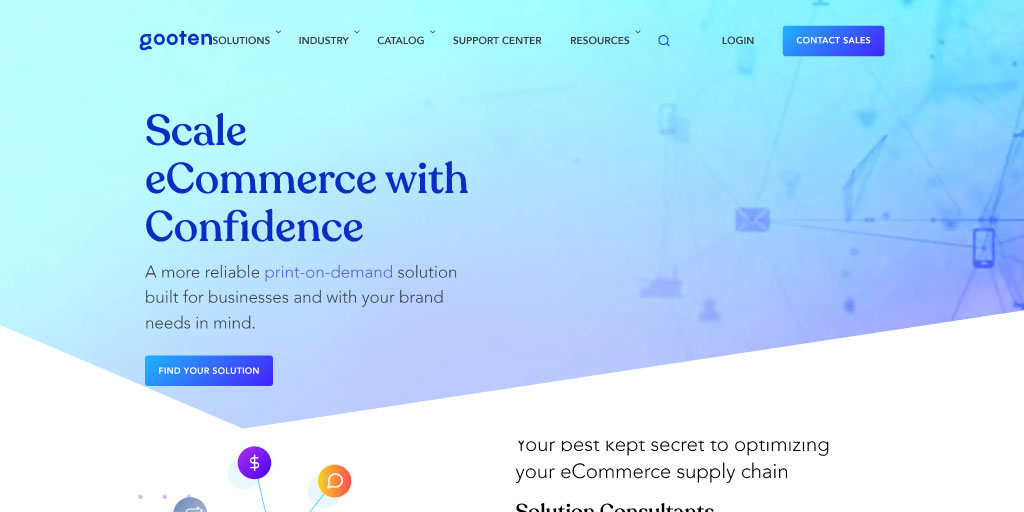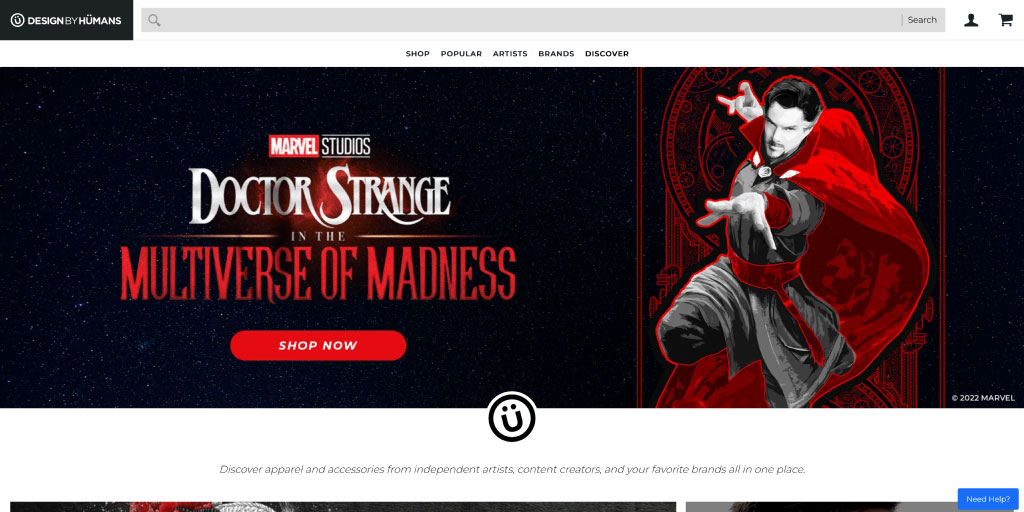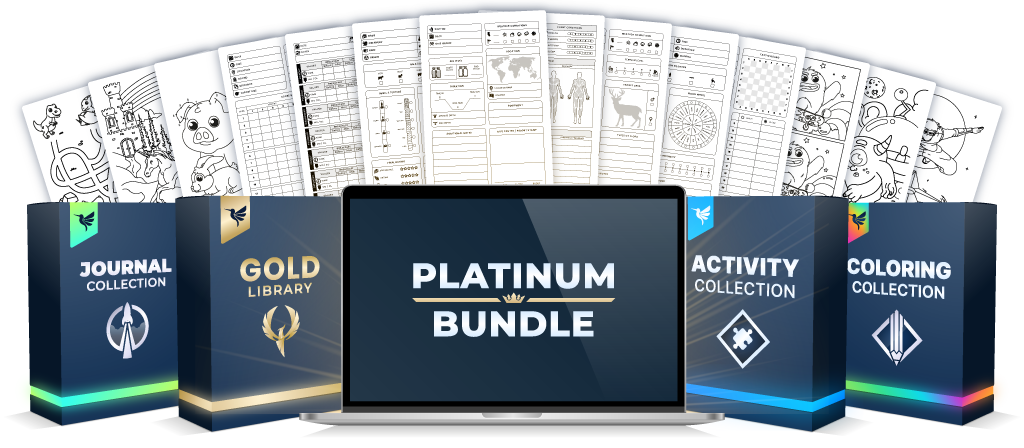Are you looking for a new stream of income? Or maybe you want to try your hand at a creative side-hustle?
If you’re an artist, writer, or any other kind of creator, you’re in luck! Now, there is an easy way for you to share your work without taking on the burdens of a traditional business, including startup capital. This exciting opportunity is called print on demand.
While some artists may worry about the lower profit margins typically associated with POD, they will actually benefit from the very low startup costs and little overhead. Print on demand has the technology in place to print artists’ work on just about anything, from apparel to housewares.
And the best part is, the print on demand method is easy. Once you have your designs in hand, you simply need to choose your supplier and product, then upload your designs. There will be more detail on each step below.
Print on demand is a booming industry that’s seen a 12% increase over the last 4 years, with an astonishing surge in 2020. One survey reports that 45% of print-on-demand store owners experienced a jump in sales.
What is Print on Demand?
In a print on demand business, creators work with suppliers of white-label products to offer customized books, apparel and other products to customers. They then sell these products on a per-order basis, without upfront costs.
Suppliers customize their white-label products with the creator’s unique design or brand. The creator can then sell their unique products on demand.
You never have to place large bulk orders or find a warehouse to store your stock. Customers order directly from the printer, and the supplier takes care of fulfillment.
Print on demand gives creators more flexibility. It allows them to attach their own brand, graphics, or text to a product of their choice. It’s a low-cost option that’s becoming increasingly popular.
Amazon Print on Demand Behind the Scenes
How Does Print on Demand Work?
In this section, we’ll give you a walk-through of the print on demand process, from picking your product to collecting royalties.
Please note, that this is just a general outline. The specific steps you take as a creator will depend on the POD company you choose to work with.
1. Pick Your Product
Print on demand offers so many products for creators to choose to put their work on. Depending on your design, however, you may be able to narrow down your product.
Are you a photographer? Consider art prints or coffee table books.
Do you have a book idea that you’re dying to write? Amazon offers self-publishing via Kindle Direct Publishing (KDP).
Do you excel at coming up with funny sayings? Think about printing them across mugs, T-shirts, and more.
Other options include:
- Apparel, such as T-shirts, hoodies, sweatpants, hats, socks, and more
- Housewares
- Tech accessories
- Travel gear
- Wall art
2. Design & Customize
Once you’ve selected the product you would like to print on, you can either start designing or customize a design you already have.
This is the part of the process where you’ll likely spend the most time. Choosing the perfect design isn’t as easy as it sounds, and you never know which design will resonate with your customers.
Take the time to conduct market research on what customers are shopping for. Or, take advantage of some of the research that’s already been done about best-selling niches.
3. Publish Your Product
Many POD services offer automation tools that take you through the upload and publishing steps. For those that don’t, the process is still straight forward.
First, you’ll need to upload the files that contain your final design. You’ll also need to add metadata. Some of the requirements will depend on your product, but at the very least, expect to add your brand, title, description, color options, keywords, and more.
You will also need to double check that your design doesn’t infringe on any existing trademarks or copyrights.
4. Ordering
The hard work is all behind you.
Your product is now available for customers to order on whichever marketplace or website you choose to sell it. Once your customer places an order, your print on demand provider automatically starts the production process.
5. Print and Production
Once a customer places an order for your product, your supplier prints the product, puts it through quality control, and prepares it for fulfillment.
6. Fulfillment / Shipping
The entire fulfillment process is handled by your supplier. Once the order is printed and invoiced, they will package and ship it.
Each POD supplier will handle this step somewhat differently. Some may have shipping restrictions, while others have global arrangements for shipping and fulfillment and can cater to international clients.
Before selecting a POD service, make sure to check where they ship and how long they take to ship. Look for companies that ship within a week.
7. Royalties Payout
Finally, it’s time for you to get paid.
Your exact royalty payout will be determined by the company you’re working with and the product you’re selling.
Again, this is something to research before selecting a company. Make sure you understand their royalty structure. Some suppliers offer a fixed royalty rate on certain products, while others will allow you to adjust royalty rates based on certain criteria.
Benefits of Print on Demand
The print on demand business model is unique, and it may not work for all creators. Artists should weigh the pros and cons of print on demand to see if the service makes sense for their situation.
Print on demand offers many benefits to creators, who may otherwise struggle with the logistics of distributing branded supplies. These benefits include:
Low or No Upfront Costs
The POD model and process is beginner-friendly.
When selling products with your designs, there is no guarantee they will end up resonating with consumers. The beauty of print on demand is that you never have to order in bulk, so design selection is risk-free. If one design isn’t selling, you can simply move on to the next without having to worry about selling the products you have in stock.
And since fulfillment is handled by the POD supplier, you also don’t need to worry about purchasing packaging.
No Inventory
Typically, businesses that sell products require warehouse space to store inventory. With print on demand, however, your products aren’t created until an order is placed. Then, your supplier takes care of printing and shipping the order. There is no inventory to store.
No Equipment
Printing your own designs on books, T-shirts or other products would normally require purchasing expensive printing and packaging equipment and then learning how to use and maintain it. With print on demand, however, your supplier takes care of the printing and packaging process for you.
Supplier Handles Fulfilment
Packing and shipping orders can be a full-time job in itself. When you choose print on demand, it’s someone else’s job.
Once a customer orders your product, it will be packaged and shipped via your carrier’s supplier. In some cases, customers will have shipping options for how quickly they want to receive their order.
Low Risk
Since you don’t have to worry about entry costs, you can set your creativity free. With print on demand, you’re in a better position to experiment, since your risks are minimized.
You also have the option of running pre-order campaigns. When launching new designs, you can set a time limit for your campaign and collect pre-orders before your product even launches without any risk.
Easier Customization
Do you have great content to offer, whether that’s words or art? Print on demand gives you the chance to customize and sell it. And you won’t just be selling to one target market. There are white-label products that will suit any taste.
Drawbacks of Print on Demand
For all of its benefits, print on demand does have a few drawbacks that are worth considering before selling your artwork in this manner. These include:
Lack of Control
A large part of your business will be controlled by your supplier. You don’t have a hands-on option for your own quality control. Your work will be produced and printed to someone else’s standards — which may not match yours.
Your product is produced and shipped by a third party. And while you most likely saw a sample, you have no way to check the quality of the product being shipped. Shipping options are also out of your control.
One of the upsides of handling your own sales and fulfillment is that you can also generate valuable data in the process. When they are in the control of your POD supplier, you typically lose access to any data they generate and are unable to use it in your marketing endeavors.
Dependence on Your POD Partner
To some extent, your business will be at the mercy of your printer.
If a customer has placed an order for a graphic T-shirt, and your supplier is backordered on shirts, there is nothing you can do to fulfill the order on time. Regardless of what type of product your image is printed on, you have to depend on your supplier’s inventory management. You also need to price your product in alignment with their pricing structure.
Customer Support
Good customer service is vital to any business, but having your products printed on demand complicates this a bit. Your customers may contact you with any issues they are experiencing, but you will need to get answers from further up your supply chain. That could delay your responses to your clients for more than a day.
Furthermore, your supplier’s return policy may be complicated, if there is a return policy at all. This can also negatively affect the customer experience.
Popular Print on Demand Products
Print on demand offers a huge selection of white-label products for designers to choose from.
Here is a detailed overview:
Books
If you’re a self-publisher, the most notable difference when using a POD supplier is size options. POD does not have an option for mass market paperbacks. You do have more size options with IngramSpark over Amazon, but both have size limitations when compared to publishers who print on traditional printing presses.
T-shirts
POD offers T-shirts for all ages and sizes. They can be long-sleeved, short-sleeved, V-neck, crew neck and more. Design options can include small logos or full-sized designs. Regardless of the weather, people are wearing T-shirts to play, work, and sleep in, so there is a nearly endless market.
Hoodies / Sweatshirts
As with T-shirts, hoodies and sweatshirts can be made for all ages and sizes. Print designs can be small or large and printed anywhere they fit. This apparel option allows you to target customers in cooler climates.
Sweatpants / Leggings
Since sweatpants are loose and baggy and leggings are tight and clingy, some attention should be given to designs. Will your design get lost in the folds of fabric, or will it look silly when stretched out?
You will have a lot of areas to print on, which means there’s room for you to get creative.
Hats
Given their size, hats are great for logos and smaller graphics. Baseball hats can be printed on the bill or anywhere on the crown.
Socks
Lots of people like to express themselves with crazy socks. Maybe it’s the only way they can be themselves under their boring corporate wear — and safely let others get a peak of it.
Knee socks, ankle socks, slipper socks — the sky is your limit. You have the option of printing on the foot of the sock — top or bottom — or anywhere on the tube.
Mugs
The mug market has been booming for years.
A lot of people have a favorite mug. They have one for their desk at work and one for home. And mugs are a great place for you to send a message — whether it’s World’s Best Dad or World’s Worst Boss.
And you don’t need to limit your mug options to the standard round, 11-oz. variety. You can print on any size or shape of mug, whether they’re ceramic or enamel.
Tote Bags
Tote bags are everyday carry-alls for many people. Often made out of a canvas-like material (although vinyl is also popular), they offer a great surface for artwork or marketing of any kind.
Tote bags offer a large flat surface for your designs, making them a favorite POD choice for many artists. And since many people are now looking for more eco-friendly choices, the tote bag is even replacing the plastic shopping bag.
Pillows / Blankets
Speaking of large flat surfaces, throw blankets have become another popular choice for creators.
If you create on a large scale with mural-like designs, blankets may just give you the space you need to display them in all their glory.
Posters / Canvas
Why should the art on your walls be limited to pictures of what someone else drew, painted, or took a photograph of?
With print on demand, you have the option of turning anything special to you into wall art. It could even be the artwork of an old master that’s now in the public domain.
Stickers
Stickers aren’t just for kids. There are so many applications — just take a look in the stickers category on Redbubble.
Stickers can be printed on rolls or sheets. They can be for fun or serve a specific purpose — like sealing envelopes or packaging. And they come in a variety of materials.
Phone Cases
Smartphones need to be protected, and consumers like to personalize their cases. Plus, nearly everyone has a phone in their hands, so it’s practically a limitless market.
Forget those boring, monochromatic phone cases that manufacturers offer. Instead, offer your designs for consumers to print on any size phone case.
Best Print-on-Demand Companies
There are many suppliers available for artists who want to start a print-on-demand business. But who should you partner with? Below, we’ll list different options in different categories, detailing the features they offer as well as the advantages and disadvantages of each company.
To provide you with a clear overview, our ranking is broken down into the following two product categories:
POD Services for Books
Many people decide to write a book. Some care about the artform itself, while others simply aim to make money.
Whatever your goal, and assuming you’re self-publishing, you have the option of finding a printer, doing a print run, and finding space to stock your books.
Your second option is much better — have your books printed on demand. This option means your books are only printed as needed, you’ll never have to pay for a large print run, and you don’t need to find space to stock anything.
And you have several print-on-demand suppliers to choose from:
Amazon KDP
Our Rating
4.6
4.6/5
Kindle Direct Publishing (KDP) is Amazon’s publishing arm.
Amazon originally started as an online bookstore, so the move into self-publishing and POD was logical. In 2018, Amazon bought CreateSpace, a print-on-demand service located in North Carolina, and merged it into KDP Print.
Pros
- High organic traffic
- Ease of use
- Free to use
- Low printing costs
- Quick turn-around times
Cons
- Print quality can vary
- High competition
BookBaby
Our Rating
4.4
4.4/5
BookBaby offers a selection of packages geared towards helping self-published authors who want someone else do most of the work for them — and have the money for it.
Packages range from $1,090 to $2,890 and include printing, distribution, ISBNs, cover design, formatting, and marketing, depending on which you choose.
Pros
- User friendly
- Excellent print quality
- No manual file review process
- Great customer service (email & phone)
- Fast shipping
Cons
- Cost-prohibitive in many cases
Lulu
Our Rating
4.2
4.2/5
Lulu Publishing, also known as Lulu Press, began their print-on-demand service in 2009. They offer both POD and distribution services. In that sense, they are much like KDP.
However, Lulu also offers POD for photo books, which Amazon isn’t known for doing.
Pros
- Quality printing
- Fast shipping
Cons
- High setup fee
- Difficult formatting process
- Weak customer service
Blurb
Our Rating
4.2
5/5
Like Lulu, Blurb is the way to go if you’re a photographer looking to print your work into book form. It gives amateurs and professionals the tools to create both magazines and photo books.
And of course, it’s also an option for both fiction and non-fiction self-published authors.
Pros
- Excellent print quality
- No setup fees
- Custom royalty structure
Cons
- High printing costs
IngramSpark
Our Rating
4.1
4.1/5
IngramSpark is the self-publishing arm of Ingram Content Group, putting them in a position to offer distribution that exceeds any other.
Pros
- Advanced distribution options
- More royalty options
- Wide range of trim sizes
Cons
- High setup fee
- Automatic and manual reviews
- Slow and clunky processes
- Customer service is lacking
The Book Patch
Our Rating
3.9
3.9/5
The Book Patch is a small print-on-demand service that also provides you with an online shop where you can list your books.
Pros
- No setup fees
- User-friendly interface
- Excellent customer service
- Great quality
Cons
- High printing costs
48HrBooks
Our Rating
3.7
3.7/5
If your need is speed, then 48HrBooks should be in your sites. Their platform is built on one promise — to proof, print, and ship short-run softcover books in 48 hours. Not only that, but they also promise that most places in the US will have their books in two days or fewer.
Pros
- Covers with raised “Diamond 3D” printing
- Great customer service (email & phone)
Cons
- No marketplace distribution
POD Services for Clothing & Accessories
Clothing and accessories make up a large part of the while-label products available for print on demand. From hats to socks and everything in between, there is a piece of apparel for everyone.
This includes winter and summer apparel, as well as clothes for babies and toddlers.
Merch by Amazon
Our Rating
4.6
4.6/5
Where Amazon’s KDP is for books, Merch by Amazon is for T-Shirts — or at least it started that way. Merch by Amazon now offers a variety of shirts, plus tote bags and phone cases.
Sellers can create their own designs, upload them, choose their colors, and set a price.
To get a Merch by Amazon account, you need to submit a request for an invite and wait for approval.
Pros
- High organic traffic
- World class logistics
- No setup fees
- Custom profit margins
- Integrated advertising tools
Cons
- Application process required
- Product quality can vary
Redbubble
Our Rating
4.5
4.5/5
Redbubble is a print-on-demand option for artists who want to sell their work on products like device cases, T-Shirts, stickers, posters, and more.
Pros
- High organic traffic
- User friendly
- Huge variety of products
- Custom profit margins
Cons
- High competition
- No integrated advertising options
Spreadshirt
Our Rating
4.3
4.3/5
Not only does Spreadshirt print on demand, but they also offer you a marketplace to sell your goods. And they have many products to choose from — the standard shirts and caps, plus things like baby clothing, aprons, and vests.
Pros
- User friendly
- Excellent customer support
- Integrated Shop System
Cons
- Fulfillment is outsourced
- Product quality can vary
Zazzle
Our Rating
4.3
4.3/5
With more than 20 years in the print-on-demand industry, Zazzle bills itself as the “leading customized products marketplace.”
With Zazzle, you can share your designs on shirts, shoes, hats, phone cases, buttons, mugs, business cards, and more.
Pros
- Ease of use
- Huge variety of products
- Selection of templates
- Custom profit margins
Cons
- High competition
- Product quality can vary
TeePublic
Our Rating
4.2
4.2/5
Don’t let the name fool you — TeePublic carries much more than just T-shirts. And for those of you who are environmentally conscious, they ensure that all their printing partners value and maintain sustainable efforts. This means using non-toxic production and biodegradable ink.
Pros
- Beginner-friendly
- Large variety of products
- Solid Organic Traffic
Cons
- Small profit margins
- No returns
TeeSpring
Our Rating
3.8
3.8/5
If you don’t have your own design tools but want to give print-on-demand products a try, TeeSpring may be a good option for you. They offer the ability to design T-Shirts — or other products — right on their platform.
Pros
- Simple, intuitive interface
- Large selection of products
- YouTube channel integration
Cons
- Low organic traffic
- Slow shipping
Printify
Our Rating
3.8
3.8/5
For those looking to add their designs to more than the typical Tee or tote, Printify has a large selection of products, including shoes, boots, swimwear, skirts, and more.
Printify also gives you access to a wide network of print providers in the US, Canada, UK, Germany, Czech Republic, and China. This means you can choose where your products are printed.
Pros
- Custom profit margins
- More than 250 products
- Fulfillment is typically 2 to 3 days
- Ecommerce marketplace integration
Cons
- Print quality is inconsistent
- No marketplace
Printful
Our Rating
3.6
3.6/5
Printful offers more than 200 products, from hats to throw pillows and so much more. They are one of the most popular dropshipping services today, and they offer several different shipping methods. These include Direct-to-Garment, All-Over Sublimation printing, embroidery, and more.
Pros
- Beginner-friendly
- High-quality printing
- Fast shipping
- Excellent fulfillment
Cons
- Low profit margins
- No marketplace
- Shipping restrictions
Gooten
Our Rating
3.5
3.8/5
Gooten offers the standard product selection of apparel and homeware along with the standard range of printing options. They do not have their own marketplace, but they can be integrated with WooCommerce, Shopify, or Etsy.
Pros
- Beginner-friendly
- Excellent customer support
- Fast shipping
Cons
- Strict approval process
- International shipping restrictions
Design by Humans
Our Rating
3.2
3.2/5
Design by Humans offers a smaller number of products than some other POD services, but it also has a better royalty rate than some. For the first 90 days, that is. After that, royalties are on par with the competition.
Pros
- Beginner-friendly
- Licensed fan arts
- Art and design contest
Cons
- Slow payouts
- Poor customer experience
Society6
Our Rating
2.9
2.9/5
According to Society6, its mission is to help customers customize every corner of their home. Creators share their designs to pair with Society6’s home products to allow customers to do just that.
And they do mean every corner of your home. Society6 offers everything from wall art to bed and bath products, décor, and more.
Pros
- Selection of special products
Cons
- Low organic traffic
- Low profit margin
- No promotion tools
CafePress
Our Rating
2.7
2.7/5
Founded in 1999, CafePress is well-known in the POD community — if only for the length of time they’ve been in business. They have a diverse selection of products to choose from, including home décor and baby items.
Pros
- Good profit margins
- Large selection of products
Cons
- Slow shipping
- Poor customer reputation
- Poor SEO optimization
How to choose the right POD Company?
Now that we’ve gone over what print on demand entails and some of the POD companies available to artists, you may be wondering how to choose the best one, or at least the best one for you.
There are several factors you want to consider:
Product Quality
Nothing else matters if your customers complain about the quality of your product. You want to be sure that the print quality and all materials are excellent.
Do some testing yourself. Order samples, even if that means paying full price for someone else’s products. Be rough with them, sleep in them, and then wash them. Did they hold up to regular wear and tear? Or did seams split and ink run?
If you’re not happy with the results, your customers won’t be either.
Shipping Times
Instant gratification isn’t possible when ordering physical goods online, but customers do expect fast shipping times.
If all other aspects are equal, but one online store has a week’s delivery and another has 48 hours, who do you think is getting the order?
Do some research and find out what the average shipping times are in your market. Either stay within that timeframe or do better.
Profit Margins
You’re in business to make money, so make sure your profits are sufficient.
Again, this will call for research. Which POD is offering the best prices? And not just for the product — you need to consider shipping and other costs as well.
Make sure you’re comparing apples to apples, because sometimes certain products are more expensive for a very good reason. Higher prices because of better quality and more tools may be worth the price.
In the final analysis, decide on how much you need to make for each sale and work from there.
Customization Possibilities
Just how much customization is necessary is an individual choice. Are your designs simple or complex? Do you need broader printing options, such as direct-to-garment or screen printing? Make sure the POD you choose can meet those needs.
The Power of Print on Demand
Today’s POD industry is expansive, meaning you have more choices than ever before. As a creator, it offers you opportunities that may not have otherwise been available to you.
Artists and designers have nearly unlimited options when it comes to selecting white-label products to feature their work. And you never have to pick just one product. Want your work on a coffee mug and hat? Or a wall and a blanket? You can do whatever you want.
If you’re an author, you could spend years trying to find an agent and a traditional publisher willing to take you on. Or, you could instead utilize self-publishing and print on demand and take control of your destiny.
It’s not necessarily an easy route. You still have hurdles to surmount like marketing and advertising. But it is doable and gives you a viable way to start and grow your business, whatever your product may be. Just make sure to choose a print-on-demand partner that will enable that growth.
Print on Demand Community
Join our Print on Demand community with countless successful store owners, designers, and marketers. Find quick help, share ideas and get access to exclusive freebies.
